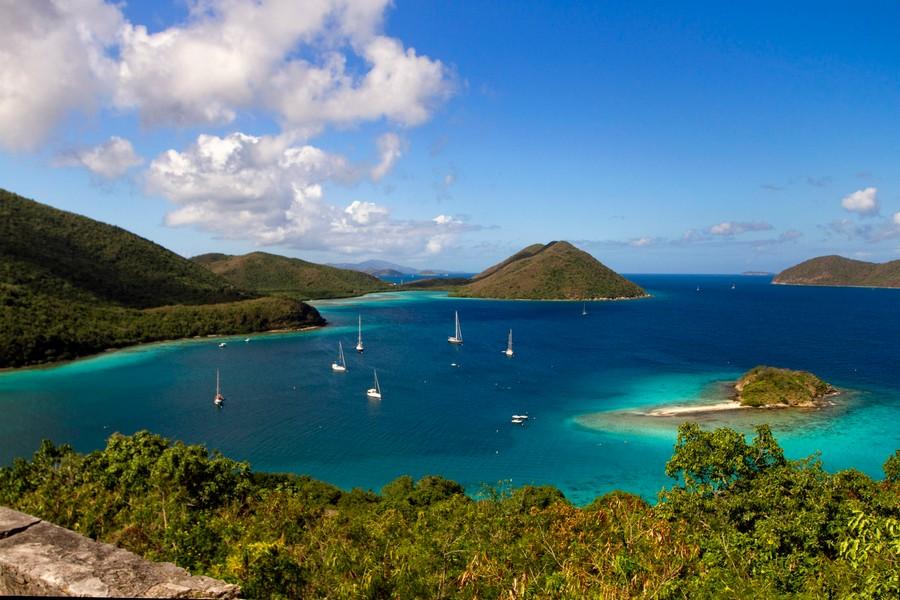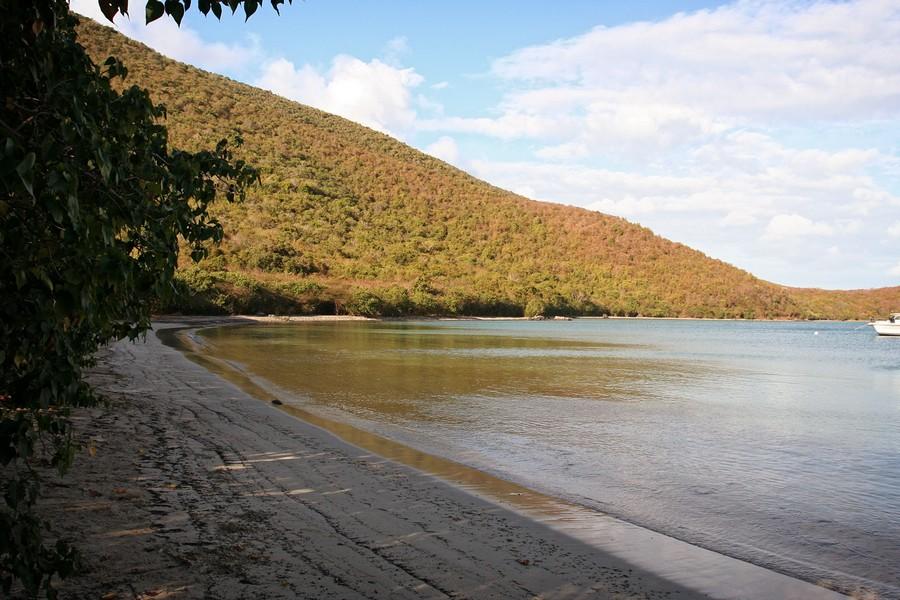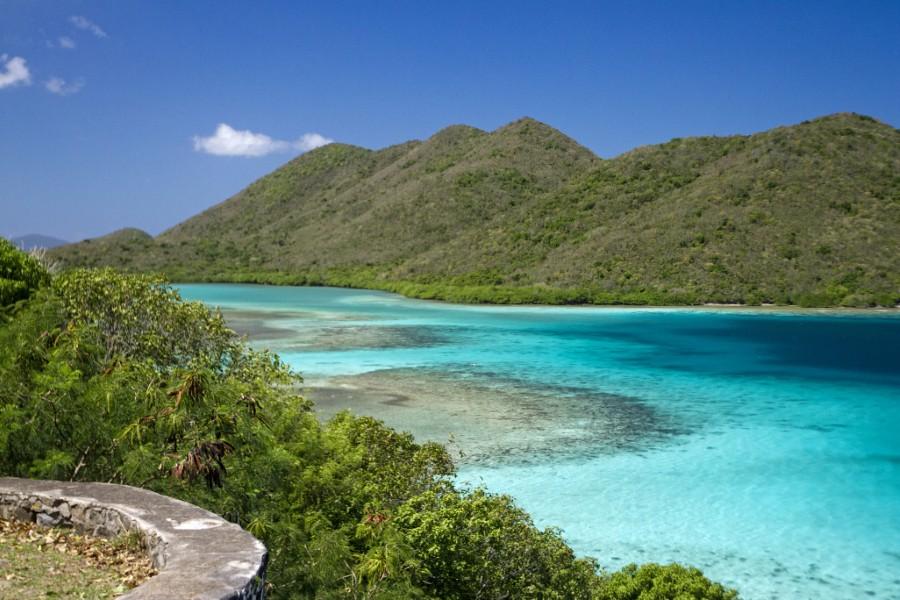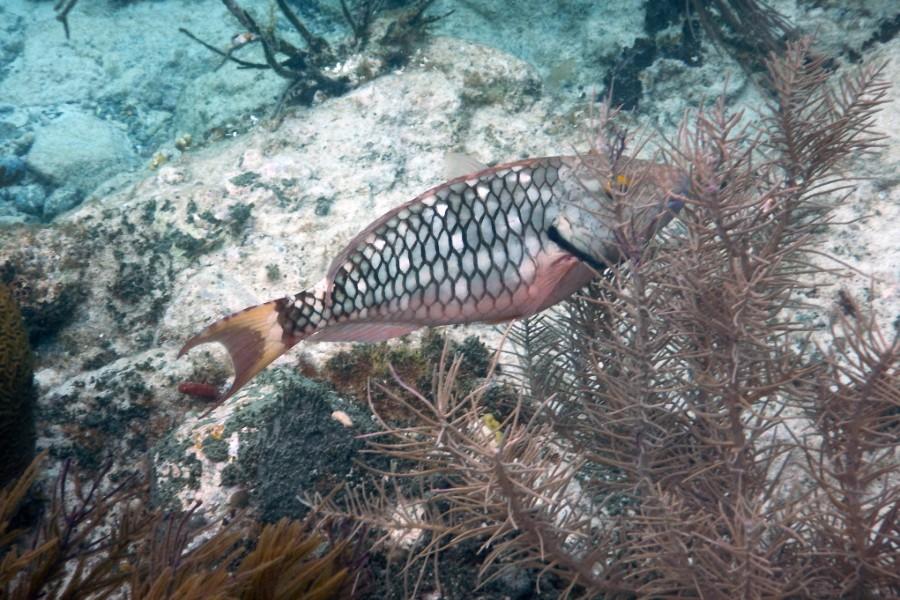Leinster Bay includes two inner bays, Mary Creek on the west and Waterlemon Bay on the east. A small, tranquil sand beach can be found at Waterlemon Bay. Just offshore of the beach is a small island, Waterlemon Cay (not Watermelon), provides what most visitors describe as the best snorkeling on St. John.
Waterlemon beach also makes an excellent cooling-off stop after a hike on the Leinster Bay, Johnny Horn, or Brown Bay Trails. Another plus for Waterlemon Bay is that you can almost always expect the sea to be quiet and calm, even in the winter when the ground seas are up.
Leinster Bay was once called Smith Bay. The current name, Leinster Bay, was adopted by James Murphy, a St. Thomas merchant, slave trader, and ship owner, who purchased Leinster Bay, and surrounding estates in 1796. The name Leinster came from the province in Ireland where his family came from.

Leinster Bay Beach
In 1918, Luther K. Zabriskie offered the following description of Leinster Bay in his book, The United States Virgin Islands: “Smith Bay with its fine bathing beach cannot be easily forgotten. The bottom of the bay is of beautiful white sand spread like a carpet.”
In terms of facilities, there are pit toilets and a trash bin near the parking lot, but that’s about it.

Snorkeling At Waterlemon Cay

From the beach, you can access the fine snorkeling around Waterlemon Cay, the small island just offshore. (Many visitors name this as their favorite snorkel.)
Enter the water from the beach and snorkel to the island. The shoreline water is shallow, and the bottom is a mixture of sand and coral rubble. It’s about a 0.2-mile snorkel to the fringing reef off Waterlemon Cay.
Between the beach and the island, you can snorkel over an environment of seagrass in about twenty feet of water, where you can often see starfish, sea cucumbers, green sea turtles, and stingrays.
To decrease the snorkeling distance to the island, follow the trail at the far end of the beach. Bear left at the first fork in the trail, which runs along the coastline. At the end of this trail, walk along the shore and choose a convenient place close to Waterlemon Cay to enter the water.
The distance across the channel to the island is only about 0.1 mile. This entry is from the rocky shoreline to a rocky bottom. Be careful not to step on live coral or sea urchins.
From this entry point to the eastern part of Waterlemon Cay, you will snorkel over an area of seagrass and scattered reef. Closer to the island, the water becomes quite shallow. Here you will see schools of blue tang and some very large parrotfish.
You can sometimes hear the parrotfish crunching their beak-like teeth along the surface of the rocks and dead coral. They do this to scrape off algae. Chunks of coral and algae pass through the parrotfish’s unique digestive system and are excreted as fine coral sand. Much of the sand on our beautiful beaches is produced in this manner.

The south and east sides of Waterlemon Cay are bordered by a shallow-water fringing reef. The reef on the west and north sides of the cay is deeper, descending to a depth of about twenty feet. The reef is teeming with fish and other sea creatures.
There are several varieties of coral to be found here, all healthy and colorful, and the sea fans and sea plumes found in the deeper parts of the reef will give you the impression of swimming about in an underwater forest.
Look for eels in holes in the reef and for octopuses, where you find opened seashells piled together.
There is often an offshore current around Waterlemon Cay, especially on the western side of the island, which will be stronger during new and full moons. If you’re not a strong swimmer, keep this in mind. If you get into trouble, follow the current and go around the island, and return on the other side.
History of Waterlemon Cay
Because dueling was illegal in the Danish West Indies, those convinced of the necessity of settling disputes or defending their honor in this manner would travel to Tortola, where the practice was legal. In 1800, however, the British Virgin Islands also prohibited dueling. Consequently, the remote and uninhabited island of Waterlemon Cay, far from the eyes of Danish or British authorities, became the new field of honor.
